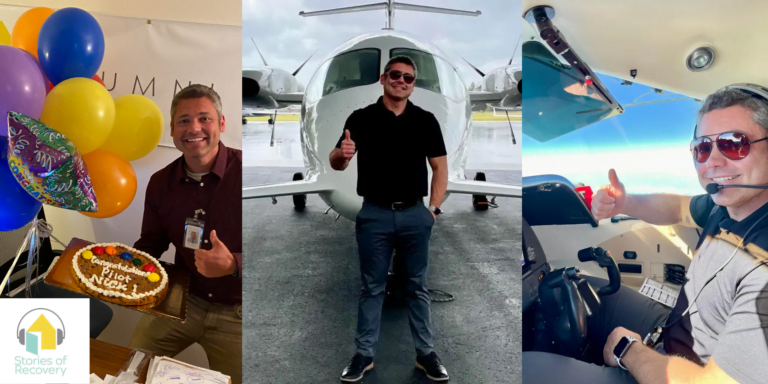MARR Addiction Treatment Centers continue to provide comprehensive care for more than 45 years. We began as a long-term (minimum 3 months) structured treatment program with one vision – serve those who struggle with Substance Use Disorders. Over those 45 years, MARR has created a treatment regimen that is unparalleled.
MARR was founded on 4 core philosophies:
First, MARR believes in separate treatment for men and women. With inherent differences in how each deals with emotions, relationships, trauma, and vulnerability, MARR believes that gender-separate and gender-focused treatment works best. Relationships are complex and being new into sobriety/treatment makes it important to give each gender time to work in safety.
Second, MARR believes that we need to treat the whole person. We focus on mental/cognitive health, we work on the physical body to allow time to heal and make necessary balances, and we intentionally work on spiritual recovery, where clients truly find one’s higher power in relation to their beliefs.
Third, MARR believes in providing structure and accountability for long-term success. From our extensive experience, we know that short-term treatment leads to short-term results. MARR believes in forming habits of recovery by working on core issues, working with a sponsor, building new positive relationships, and having positive experiences in recovery. These life-changing experiences lead to long-term success.
Finally, MARR believes in and created the treatment community (community living). Community is the change agent. Learning how to live with others without using substances is the key to keeping lasting recovery. We have experienced true, life-altering changes through living with others in recovery.
A treatment community is one in which the person is allowed to thrive. Many programs offer the first 3 facets: Individual work/core issues, safe programming for genders sensitive treatment, and a holistic approach. However, none have been able to add the secret ingredient (community living) which is essential for long-term effectiveness.
What is The MARR Treatment Model? A combination of all 4 components happening simultaneously.
It starts with Primary Treatment. The client will first work with counselors and other peers to identify core issues and treatment plans. Included but not limited, are trauma, emotional development, life skills, relapse prevention, physical education/treatment, CBT, DBT, etc. A person in a peer group led by a Master’s level counselor can start the process of identification and understanding core issues. Surrounded by peers and support staff, a client can begin to heal physically, identify specific needs, and develop a plan. During this time frame, a person is identifying barriers, exploring new emotions, and learning and developing new skill sets.
At the same time this identification process is happening, a client is living in a community amongst peers, putting into practice these new skills. This is called Community Living. Community living requires that a person be themselves, with no chemicals, no influences, just raw emotional self. This is the hardest part of treatment. A client can’t use old skills or habits to alleviate emotional pain. They are forced to live with other peers with emotions they have not either felt or numbed in the past. Although this is uncomfortable, it allows the client and peers to start identifying triggers, warning signs, developmental stunts, family of origin issues, and personal blind spots. Without this component of a Treatment Community, the individual can stay in their head, try and learn by theory only. In a Community Living arena, the client cannot hide. They remove the mask that keeps them stuck while learning how to communicate and be vulnerable in a safe environment. Having both counselors and peers challenge the coping mechanisms that have worked in the past but need to change allows for a more immediate transition to new skills more ingrained into daily living. Additionally, Community Living allows for the person to experience how life in recovery will look in the future. A client will start practicing daily living skills as a part of their shared experience in the community. They will eat meals together, prepare meals together, shop together, go to outside meetings, attend spiritual functions, and manage a residence. Practicing these skills in a family-style setting will give new experiences or nurture lost behaviors.
Alumni connections are made immediately! New clients will meet MARR alumni within the first few days of treatment. Either via staff or alumni attended meetings, clients see the long-term effects of sobriety on day 1. They will hear success stories and challenges that many have faced. On hearing similar stories to their own, clients will start to feel hope immediately. Having alumni involvement gives clients a chance to ask questions, identify with similarities and feel safer that there are others just like them. Alumni also connect with individuals and offer advice that staff may not be able to offer. Sometimes clients are more willing to hear from a person who has been in their shoes. Although staff and clinical care are hugely important, having alternatives for a client allows for a more robust experience.
The alumni association is involved in almost all aspects of treatment life. The association has weekly and monthly meetings, volunteers in spirituality and therapy groups, and hosts events that support the long-term nature of recovery. The wrap-around care that our alumni provide is like no other program and it is essential to the Treatment Community.
Family counselors will begin to work with partners, parents, and spouses through our Family Program. Families are both educated about the disease their loved ones have and shown how they can use a support network to work on their own recovery. This is a difficult task for families. They have spent most of their time worrying, helping, and fixating on their loved one. They have an emotional interest in the loved one getting better so most of their attempts in early treatment are to make sure they are staying, changing, and accepting the help. Those three endeavors will not help their loved one or themselves. Convincing them of that fact is extremely difficult. Not just because they need the comfort of knowing, but also because this will (in their mind) ease their emotions. It will make them sleep better at night, less stressed, and start to focus on their life. All these goals are good and right, however, being dependent on their loved one to get better to achieve these goals is short-sighted and never works. They are temporary. As stated earlier, we want long-lasting recovery for clients and their families. We do that by making sure the family is educated about the disease and recovery, two different concepts. We make sure the family is working on managing their own recovery, emotions, and focusing on life whether their loved one gets better or not. And in doing so, we have equipped the family to be an ongoing support for their loved ones.
These four key ingredients are essential for long-term recovery! Many programs have shortened their length of stay to accommodate insurance. Others have moved to focusing only on the 12-Steps of AA/NA/CA. And a large number have been enveloped by larger corporations. MARR stands true to our convictions of success. Although many are resistant in the beginning, The MARR Treatment Model ultimately gives clients exactly what they so need. The individuals we serve deserve our best. They deserve the MARR difference!


